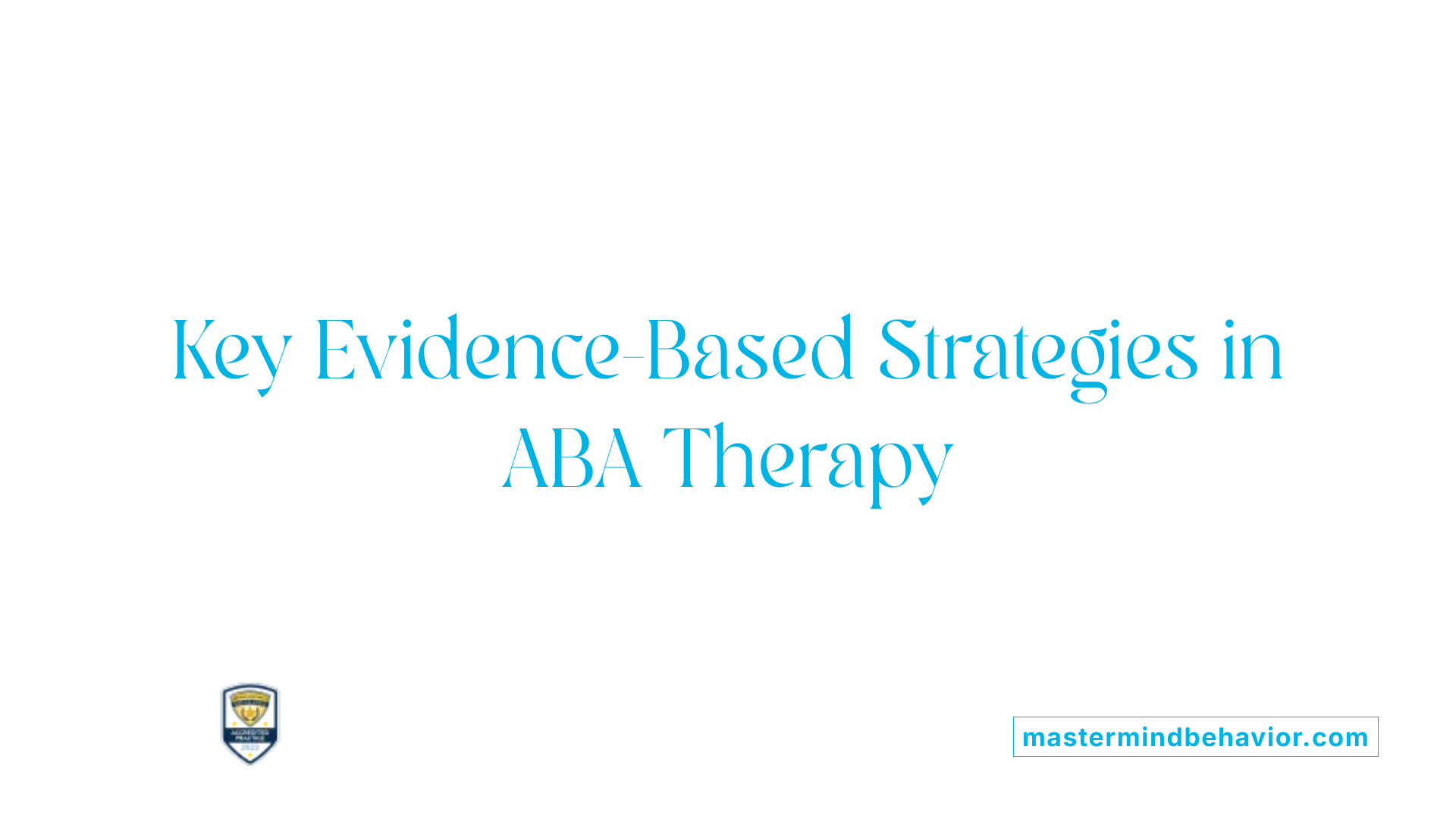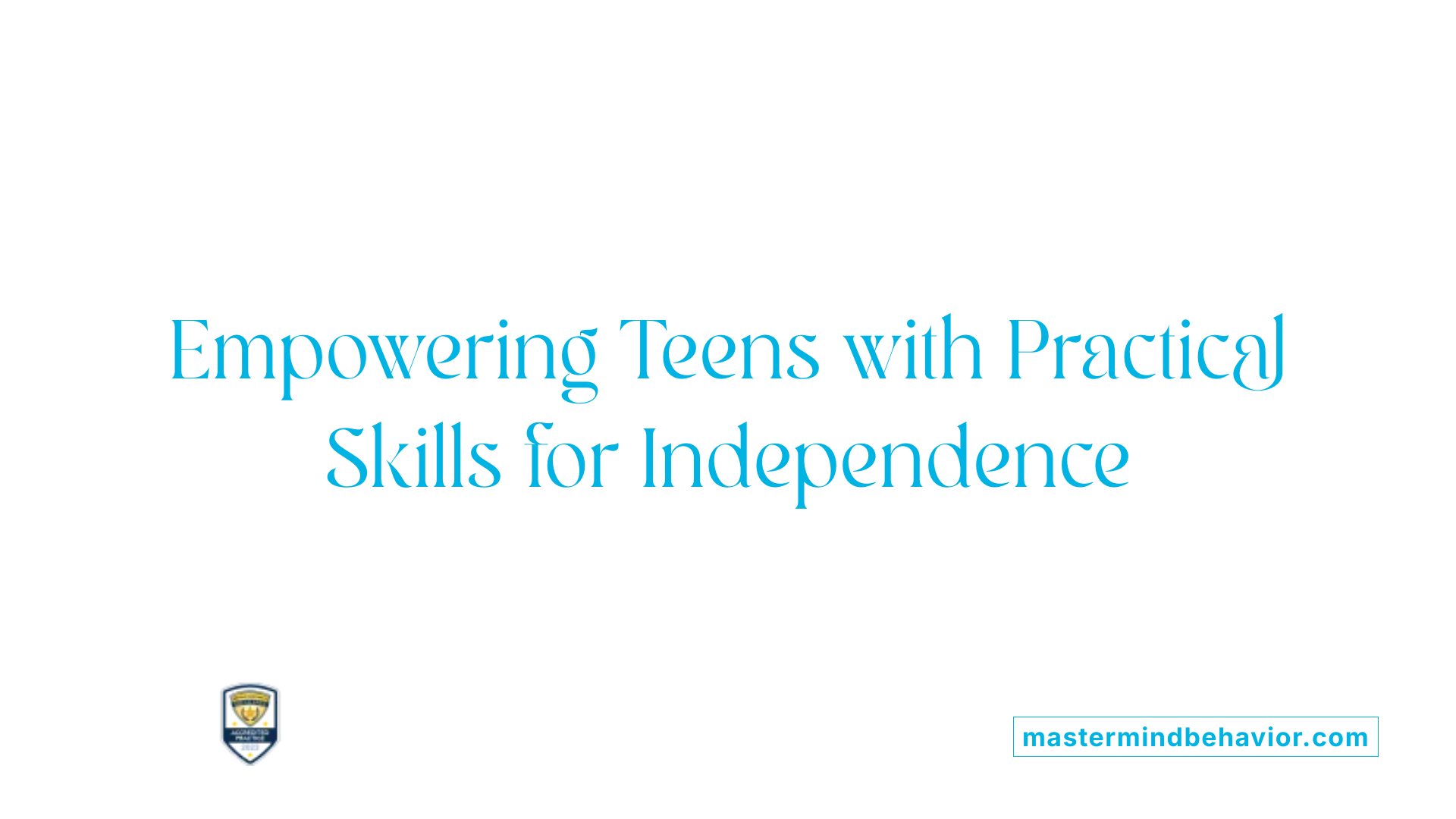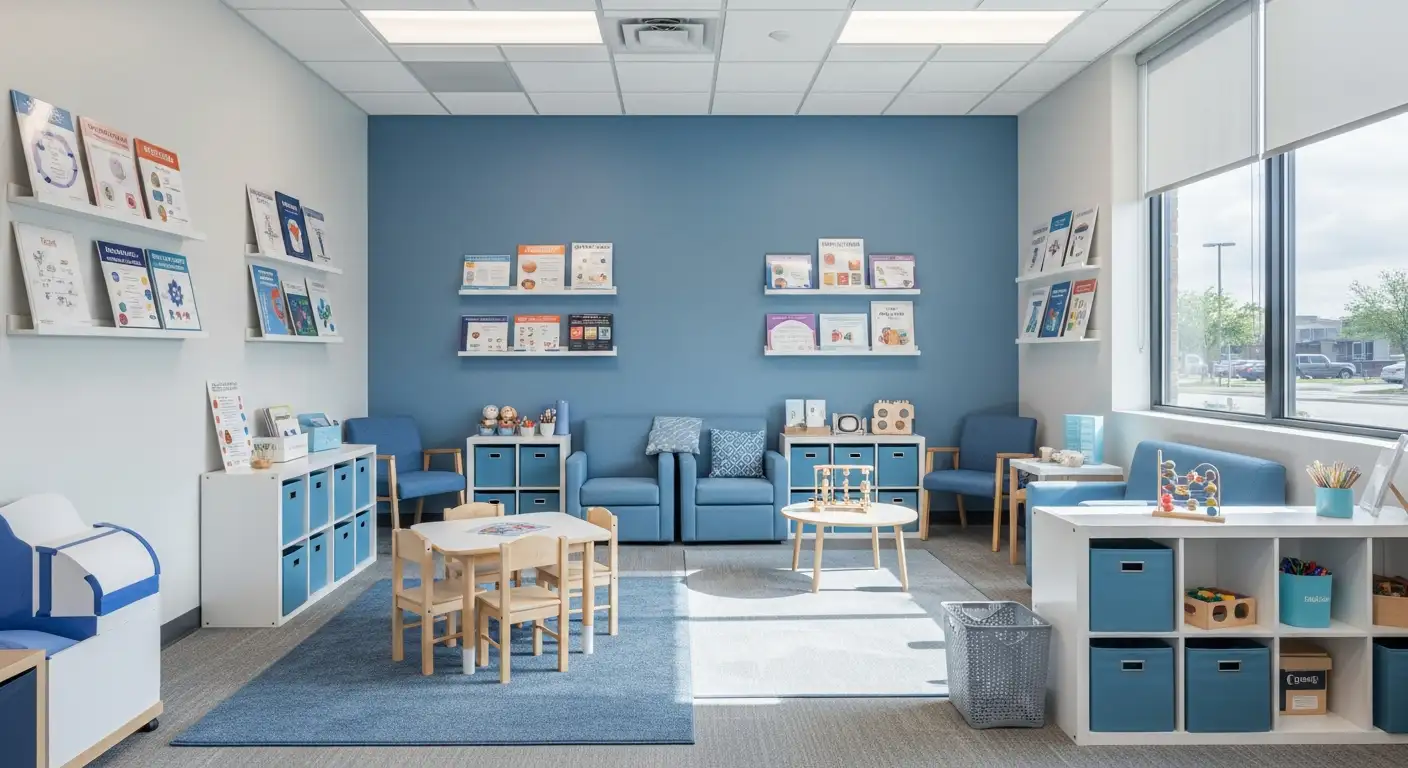Setting the Stage for Successful Adulthood
As teenagers with autism approach the pivotal phase of transitioning into adulthood, targeted support systems become crucial. Among these, Applied Behavior Analysis (ABA) therapy stands out as a gold standard, equipped with evidence-based methods to foster essential skills. This article explores how ABA therapy systematically prepares teens for the complexities of adult life, focusing on skill development, behavioral strategies, and collaborative planning that set the foundation for independence.
Core Methods and Techniques in ABA Therapy for Adolescents

What methods and approaches are used in ABA therapy for adolescents?
ABA therapy for teenagers utilizes a combination of proven, evidence-based strategies aimed at improving skills and reducing problematic behaviors. Central to this approach is positive reinforcement, which encourages desirable actions by rewarding progress. This technique helps motivate teens to adopt healthier, more adaptive behaviors.
Another fundamental method is task analysis, where complex skills are broken down into smaller, manageable steps. This makes learning easier and allows for systematic teaching. Therapists often use prompting, such as verbal instructions or physical guidance, to initiate a skill; this is gradually faded over time as independence increases.
FCT, or functional communication training, plays a crucial role in helping teens learn to express their needs effectively, whether through speech or alternative communication methods like gestures or devices. This reduces frustration and improves social interactions.
In addition to these, social stories, role-playing, and engaging in structured activities are employed to teach social skills, emotional regulation, and daily living tasks. These approaches are customized to each adolescent’s strengths and challenges.
Continuous data collection, progress monitoring, and collaboration with family members guide the individualization of therapy, ensuring skills learned are applicable in real-world situations and generalized outside therapy sessions. Overall, these methods work together to support teen development, independence, and successful transition into adulthood.
Building Independence and Practical Life Skills

How does ABA therapy support the development of independence and life skills in teens?
ABA therapy plays a vital role in helping teenagers with autism develop critical skills needed for independent living. The therapy focuses on teaching routines such as personal hygiene, grooming, cooking, and managing money through tailored, step-by-step approaches. These activities are broken down into manageable tasks, making it easier for teens to learn and master each one.
To ensure effective learning, ABA employs techniques like positive reinforcement, task analysis, prompting, and modeling. Positive reinforcement encourages teens to repeat desirable behaviors, while task analysis breaks complex skills into smaller parts. Prompts and modeling provide guidance on how to perform tasks, which are gradually reduced as independence increases.
A significant aspect of ABA is helping teens generalize these skills across various settings—home, school, and the community. This ensures that behaviors learned during therapy are carried over into real-life situations, fostering greater autonomy.
In addition to daily routines, ABA emphasizes improving communication and social skills. These abilities are essential for building relationships, participating in social activities, and navigating new environments confidently.
Addressing challenging behaviors and teaching self-regulation strategies are also crucial components. By managing emotions and stress, teens become more self-reliant and capable of making decisions independently.
Family involvement is often integrated into ABA programs, with therapists working closely with caregivers to reinforce skills outside therapy sessions. Continuous progress monitoring and future transition planning further support teens in achieving sustainable independence.
Overall, ABA therapy equips teens with the practical skills and confidence needed to thrive as autonomous individuals in their communities.
Enhancing Educational, Social, and Emotional Development
 ABA therapy employs a variety of evidence-based strategies to foster development in educational, social, and emotional domains for teenagers with autism. These strategies include behavior modification techniques that encourage positive behaviors and skill acquisition, along with reinforcement systems designed to motivate and sustain progress.
ABA therapy employs a variety of evidence-based strategies to foster development in educational, social, and emotional domains for teenagers with autism. These strategies include behavior modification techniques that encourage positive behaviors and skill acquisition, along with reinforcement systems designed to motivate and sustain progress.
A core component involves breaking complex skills into manageable steps, making learning more accessible and structured. Techniques such as Discrete Trial Training (DTT), Natural Environment Teaching (NET), role-playing, and social skills groups are frequently used to build communication, social interaction, and emotional regulation. These methods allow teens to practice real-life situations in supportive settings, helping them transfer skills to everyday environments.
To ensure that improvements are sustained and generalized across settings, ABA emphasizes the use of visual supports, structured routines, and peer-mediated interventions. Visual aids can include schedules, social stories, or cue cards that help teens understand expectations and navigate social cues more effectively. Structured routines provide predictability, reducing anxiety and building confidence. Peer-mediated interventions involve classmates or friends participating in social activities, promoting inclusion and authentic social experiences.
Continuous progress monitoring through data collection is vital in ABA therapy. Regular assessments enable therapists and families to adjust strategies in real-time, ensuring that intervention efforts are effective. Family involvement is also crucial; parents and caregivers are trained to reinforce skills at home, practice social scenarios, and maintain consistent routines. These collaborative efforts create a comprehensive support system that nurtures social and emotional growth, fostering resilience, independence, and stronger social connections in teens.
Supporting Transition to Adulthood: Skills and Strategies

What are the benefits of ABA therapy in supporting transition to adulthood?
ABA therapy plays a crucial role in helping individuals with autism prepare for independent and successful adulthood. By focusing on developing practical skills in various aspects of daily life, the therapy enhances overall independence, social competence, and emotional resilience.
One significant advantage is the improvement in vocational and life skills. These include managing daily routines like personal care, household tasks, and time management. ABA programs also teach communication skills necessary for social interactions and workplace communication, such as initiating conversations and understanding social cues.
The approach is highly personalized. Using assessments that identify strengths and challenges, therapists set specific, measurable goals aligned with each individual's aspirations. Whether it's practicing public transportation navigation, engaging in community activities, or preparing for employment, these real-world experiences foster confidence and self-sufficiency.
In addition, ABA emphasizes consistent practice of skills across environments. This might include mock interviews, teamwork exercises, or real-world errands, preparing teens for actual work scenarios and daily adult responsibilities.
Positive reinforcement remains central, encouraging desired behaviors and motivation. Data collection and regular reviews help therapists modify strategies to ensure continuous progress. Family involvement is encouraged, as caregivers learn techniques to reinforce skills at home and in community settings.
Overall, ABA therapy facilitates a smoother transition into adulthood by empowering young people with autism to manage their independence confidently, navigate community settings proficiently, and achieve personal goals—setting a foundation for a more autonomous and fulfilling life.
Facilitating Transitions and Managing Change

How does ABA therapy facilitate transition planning for teens with autism?
ABA therapy plays a vital role in helping teens with autism navigate various transitions, whether in school, social environments, or daily living routines. One of the main methods involves teaching and reinforcing specific skills that promote understanding and independence. For example, teenagers learn to recognize routines, use visual supports like schedules, and follow social stories to prepare for change.
Using visual tools such as schedules, timers, and cues like first/then statements, ABA helps reduce anxiety associated with transitions and decreases challenging behaviors. These strategies provide predictability, making change less overwhelming for teens.
Collaboration among families, educators, and therapists is essential. Together, they develop personalized goals aligned with each teen’s needs, ensuring consistency in applying transition strategies across different settings.
ABA also emphasizes developing behavioral flexibility and problem-solving skills. These abilities enable teens to adapt to new situations more easily, fostering greater independence.
Evidence-based tools and techniques are applied to ease transitions further, creating supportive environments that promote continuous development. Through these targeted interventions, ABA helps teens manage change confidently, supporting their journey toward adulthood and personal growth.
Fostering Lasting Success and Autonomy
ABA therapy plays a vital role in equipping teenagers with autism with the skills, behaviors, and confidence needed to navigate adulthood successfully. Through personalized interventions, the use of proven techniques, and collaborative planning with families and educators, ABA fosters independence, enhances social and emotional competence, and prepares teens for real-world challenges. With continuous progress monitoring and adaptation, ABA not only supports immediate developmental goals but also ensures long-term success, empowering young adults with autism to lead independent, meaningful lives.
References
- ABA Therapy For Teens
- Exploring ABA Therapy for Teens
- Unit 14: ABA and School-Ready Teens: Transitioning to Adulthood
- ABA Therapy for Teens: Building Independence - Therapyland
- ABA Therapy for High-Functioning Autistic Teens: A Guide
- ABA Therapy for Different Age Groups: A Guide for Parents
- ABA Therapy for Adults: Benefits and What to Expect
- The Role of ABA in Transitioning Young Adults with Autism
- What can ABA offer young adults with autism?
- Autism Treatment and Transition to Adulthood









